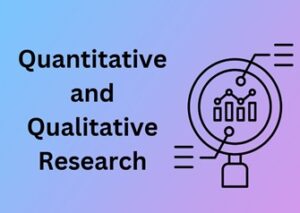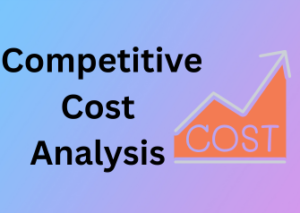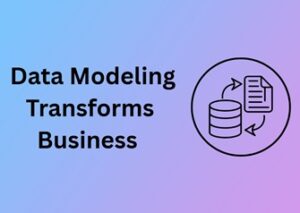`Hello there! Let’s dive into a topic that’s becoming more and more important in the modern corporate world: ESG risk management. If you’re wondering why this is such a big deal, you’re in the right place. Here’s the thing — up until recently, many companies treated ESG (Environmental, Social, and Governance) as a box-ticking exercise to meet regulatory requirements. But today, it’s way more than just about compliance. Forward-thinking organizations are recognizing that effective ESG risk management can drive real, measurable value — both for the planet and for long-term business success. Curious? Keep reading, because there’s a lot to unpack here.
Beyond Compliance: The Bigger Picture
Yes, compliance is critical. We all know that laws and regulations are there for a reason, and staying on the right side of them is non-negotiable. But here’s where companies often miss out: treating ESG like a “must-do” rather than a “get-to-do.” It’s not just a tedious task for avoiding penalties — it’s an opportunity. Think of ESG risk management as a way of future-proofing your organization. It helps you minimize vulnerabilities, build resilience, and, dare we say, stand out from your competitors.

How Smart ESG Risk Management Can Give You a Competitive Edge
We’re in an era where customers, investors, employees, and even regulatory bodies expect more. Gone are the days when businesses could quietly get by without prioritizing social or environmental impact. Doing the bare minimum just doesn’t cut it. Taking ESG seriously means building trust and loyalty. It shows you’re responsible, ethical, and sustainable in the truest sense. Want an added bonus? Investors are increasingly putting their money into companies with solid ESG practices because it signals long-term stability. If you’re not taking ESG risks seriously, your competitors absolutely are. Why not get ahead of the curve?
It’s Not Just About Reputation — It’s About Longevity
When companies view ESG solely as a risk of losing public goodwill, they’re missing the bigger picture. Sure, a failure in ESG can tarnish your brand reputation, but its impact goes deeper. Take, for instance, environmental risks tied to climate change or poor resource usage. The long-term costs of ignoring these challenges can hit a company where it hurts most — their bottom line. Think supply chain disruptions, regulatory fines, or even a mass investor exodus because of short-sightedness.
The Social and Governance Angle
Let’s not overlook the “S” and “G” of ESG. Social risks, like failing to uphold labor standards or engaging in discriminatory practices, have lasting ripple effects. Employees and customers are more socially conscious than ever, and they expect accountability. As for governance, ignoring crucial risks like poor leadership transparency or weak internal oversight can derail even the most profitable enterprises. When integrated into your strategy, ESG risk management ensures you’re managing these aspects with the care they deserve.
Identifying Hidden Risks in ESG Practices
When we talk about ESG (Environmental, Social, and Governance), most of us immediately think about the good stuff—green initiatives, ethical business practices, and diversity efforts. But here’s the deal: even the most well-intentioned ESG plans can have potential blind spots. These “hidden risks” can quietly undermine your efforts if left unchecked. Let’s shine some light on these risks and explore ways to steer clear of trouble.
1. Overlooking Supply Chain Vulnerabilities
Your company might have stellar ESG practices internally, but what about your partners and suppliers? A problematic supply chain—be it questionable labor practices or poor environmental standards—can tarnish your reputation in an instant. Think of it like a domino effect; it only takes one shaky domino to disrupt the entire line. Performing due diligence across your supply chain is non-negotiable. Build relationships with suppliers that align with your values and audit them periodically to mitigate this risk.
2. Greenwashing: A Fast Track to Losing Trust
Putting “sustainable” or “eco-friendly” labels on your products might sound like a great idea, but unless these claims are backed by real, measurable action, you could be walking a very fine line. This is called greenwashing, and it’s a direct route to eroding consumer trust and even facing regulatory headaches. Customers are savvier than ever, and they’re not afraid to call out inconsistencies. Be transparent, honest, and grounded in data when communicating your ESG accomplishments.
3. Failing to Account for Climate Change Risks
Climate change isn’t just an environmental issue—it’s a business issue. From physical risks like extreme weather events disrupting operations to transitional risks like changing regulations and carbon taxes, climate change impacts can creep up on your company in unpredictable ways. Whether it’s developing a solid climate resilience plan or committing to net-zero goals, ignoring climate-related risks can be costly in the long run.
4. Neglecting Social and Governance Factors
Sometimes, companies put too much focus on the “E” in ESG and overlook the “S” and “G.” Poor treatment of employees, lack of community engagement, and weak board oversight are just a few issues that can derail ESG efforts. For instance, a whistleblower revealing governance issues or social misconduct within your organization could lead to reputational damage and legal troubles. It’s crucial to approach ESG as a balanced framework—not just an environmental initiative.
5. Underestimating the Speed of Regulatory Changes
Governments and regulatory bodies are doubling down on ESG compliance. What’s acceptable practice today might land you in hot water tomorrow if you’re not prepared for evolving standards. Staying ahead of legislation is a strategic advantage, not just a compliance checkbox. Have a clear roadmap to adapt to new regulations before they hit your industry.
How to Stay One Step Ahead
- Conduct comprehensive risk assessments: Identify potential ESG-related risks relevant to your industry and operations.
- Foster cross-department collaboration: ESG issues don’t exist in silos—engage all teams for a holistic approach.
- Use benchmarks and frameworks: Tools like the TCFD (Task Force on Climate-related Financial Disclosures) and GRI (Global Reporting Initiative) can guide your strategy and help identify blind spots.
- Stay updated: Keep an eye on ESG news, regulations, and emerging trends to ensure you’re proactive rather than reactive.

The Financial Implications of Poor ESG Oversight
Let’s face it—Environmental, Social, and Governance (ESG) practices aren’t just buzzwords anymore. They’ve become a core element of how organizations are evaluated by investors, employees, customers, and regulators alike. But what happens when companies drop the ball on their ESG oversight? The financial repercussions can be staggering, reaching far beyond initial losses and creating long-term damage. Let’s break this down in practical terms.
Reputational Damage and Its Ripple Effect
Imagine this: your company becomes the subject of a public scandal involving environmental negligence, poor labor practices, or lack of governance transparency. With news spreading like wildfire via social media, the fallout can be immediate—and costly. Stock prices often plummet, customers may boycott your brand, and trust in your organization erodes.
Why does this matter? **Reputation is currency.** Companies spend years and millions of dollars building goodwill, but just one ESG oversight could undo all that hard work. Studies show that companies with poor ESG performance are more likely to face legal penalties, which can snowball into financial strain. Worse yet, the cost of rebuilding trust can exceed the initial losses, leaving organizations struggling to recover for years to come.
Higher Cost of Capital
Did you know that ESG performance is a critical metric for investors? Poor governance or environmental mishaps signal higher risks to institutional investors and lenders, making them wary of injecting capital. In financial terms, **a higher risk profile means a higher cost of borrowing.** Your business may face unfavorable lending terms, higher interest rates, or, in some cases, complete exclusion from investment opportunities.
Major financial institutions increasingly rely on ESG ratings to screen their investments, and a weak ESG stance can shut you out of these funding pipelines entirely. If you’re a business leader looking to grow, this is a problem you can’t afford to ignore.
Operational Costs and Liability Risks
Poor oversight often leads to inefficient ESG practices, which can drive up operational costs. For example, failure to comply with environmental regulations might result in penalties or mandatory upgrades to outdated systems. Similarly, ignoring labor laws or workplace safety standards can result in hefty compensation payouts following lawsuits.
Moreover, ESG risks, such as climate change, are tightly linked to operational vulnerabilities. For instance, failing to adapt to climate-resilient supply chains might expose your company to disruptions from extreme weather events, which can be incredibly costly to address on a reactive basis.
Loss of Competitive Edge
Consumers and employees today demand more from businesses. People actively choose to align themselves with organizations that demonstrate strong, authentic commitments to ESG principles. Poor oversight not only alienates your customer base but can also cause internal friction, leading to higher employee turnover and difficulty attracting top talent. Why? **Because no one wants to work for a company that’s on the wrong side of history.**
This loss of competitive advantage affects your revenues and profitability. If your competitors are winning over ESG-conscious customers while adopting cost-efficient sustainable practices, you run the real risk of being outperformed in the marketplace.
Proactive Steps to Avoid Financial Repercussions
- Regular Audits: Conduct frequent ESG audits to identify gaps and address them proactively.
- Stakeholder Engagement: Foster open communication with employees, investors, and suppliers to align ESG objectives across the board.
- Dedicated Oversight Teams: Establish ESG-specific roles or committees to oversee policies and provide accountability.
- Continuous Education: Train your team on the financial importance of ESG to create a culture of responsibility and vigilance.
- Early Risk Identification: Leverage ESG data analytics tools to spot potential red flags before they escalate.
Bridging Stakeholder Expectations with ESG Strategies
In today’s world, stakeholders are looking for businesses to do more than just deliver profits. Employees, investors, customers, and even regulators want to see companies align their values with environmental, social, and governance (ESG) principles. But here’s the catch — meeting these expectations isn’t always straightforward. To achieve this, you need a solid strategy and clear communication. Let’s explore how businesses can effectively bridge the gap between stakeholder expectations and ESG goals.
Start by Understanding Your Stakeholders
Bridging stakeholder expectations begins with identifying who your stakeholders are and what they care about. From investors focused on sustainability metrics to customers who value ethical practices, every group brings unique priorities to the table. Here’s how you can dive into this:
- Engage in dialogue: Conduct surveys, roundtables, or focus groups to uncover their concerns.
- Leverage existing data: Review feedback from social media, customer reviews, or employee engagement surveys.
- Segment stakeholders: Understand that not all stakeholders value the same aspects of ESG equally. Tailor your approach accordingly.
These conversations don’t just help you understand stakeholder expectations. They also build trust by showing you value their input — a win-win for everyone.
Align Expectations with Clear ESG Goals
Now that you know what your stakeholders want, it’s time to align those expectations with initiatives that matter to your business. Creating clarity here is crucial. Consider these steps:
- Define your ESG priorities: Identify key areas (like carbon reduction, diversity, or responsible sourcing) that resonate with both your stakeholders and your long-term business strategy.
- Communicate your intentions: Publish transparent ESG policies. Tell your stakeholders what you’re committed to achieving and by when.
- Highlight mutual benefits: Show how your ESG actions not only address societal concerns but also drive innovation, build customer loyalty, or attract top talent.
A clear alignment fosters trust, positioning your business as proactive rather than reactive in addressing global challenges.
Set the Stage for Collaboration
One of the best ways to bridge expectations is to involve stakeholders in your ESG journey. Create opportunities for collaboration. For example:
- Bring employees onboard: Offer training in areas like sustainability or diversity initiatives, making them active participants in your efforts.
- Work with investors: Develop ESG reports that highlight progress and address concerns raised by shareholders.
- Engage with communities: Partner with local organizations to implement impactful, community-driven projects.
Collaboration transforms stakeholders from passive onlookers into active contributors, creating a sense of shared responsibility.
Communicate Progress Consistently, Authentically
Nobody expects perfection, but they do expect honesty. Keep stakeholders updated on progress — not just the wins, but also the challenges. Share regular ESG reports, updates on milestones, and even setbacks. This builds credibility and fosters long-term support.
Remember: Communication isn’t a one-time thing. Stay consistent through social media, newsletters, and meetings to keep your community engaged and informed.
Leveraging Technology to Enhance ESG Risk Monitoring
When it comes to Environmental, Social, and Governance (ESG) risk management, technology has emerged as a game-changer. Think about it—today’s world is driven by data, and there’s no better way to get a handle on ESG risks than by harnessing the power of tech. But what does it really mean to leverage technology for ESG monitoring, and how do you make the most of it? Let’s dive in and explore!
Why Technology Sets You Ahead in ESG Risk Monitoring
Managing ESG risks is a bit like trying to solve a giant puzzle; you need to see the whole picture and understand where every piece fits. By using technology, you gain the ability to:
- Gather Real-Time Data: Whether it’s monitoring real-time pollution levels or tracking labor practices across your supply chain, technology ensures that you’re never in the dark.
- Boost Transparency: Tech allows you to track, log, and share ESG data with stakeholders. This isn’t just about accountability—it’s also a trust-building measure.
- Scale Your Efforts: With tools like AI and IoT devices, you can manage ESG risks globally, from tracking deforestation rates to ensuring labor law compliance.
Tools You Can’t Ignore
Here’s where it gets exciting—there are incredible tech tools that can take your ESG risk management to the next level. Let’s break down a few:
- Data Analytics Platforms: These help you crunch numbers and identify patterns. For instance, you could analyze carbon emissions trends and pinpoint areas for improvement.
- Blockchain: Transparency issues? Blockchain’s got your back. It’s an incredible tool for verifying sourcing or supply chain activities, ensuring your operations align with ESG commitments.
- IoT (Internet of Things) Sensors: These are perfect for environmental monitoring. Think smart sensors in factories measuring air and water quality in real time.
- AI & Machine Learning: Predictive algorithms can assess where risks might arise. For example, they can help forecast the social impacts of expanding into a new region.
- ESG Management Software: Comprehensive platforms like Enablon or Sphera simplify the task of consolidating multiple ESG metrics into actionable insights.
Getting Started with ESG Tech Integration
If all this sounds appealing but slightly overwhelming, don’t worry—you don’t need to reinvent the wheel. Here’s a step-by-step guide to getting started with technology-enhanced ESG risk monitoring:
- Define Your Priorities: Identify your key ESG risks and figure out which areas need the most attention.
- Research Tools: Explore platforms or tools that cater to your sector’s unique needs. A retail business might focus on supply chain tools, whereas a manufacturing firm might prioritize IoT sensors.
- Start Small: Implement technology with a pilot phase. For instance, try monitoring ESG risks in one part of your supply chain before scaling globally.
- Train Your Team: Technology is only as helpful as the people using it. Invest in training to ensure your team can make the most of your tools.
- Continuously Evaluate: Set benchmarks and KPIs to measure the effectiveness of your tech tools and adapt as you go.
Industry-Specific Challenges in Implementing ESG Measures
When it comes to implementing Environmental, Social, and Governance (ESG) measures, one thing is clear: one-size-fits-all doesn’t work. Industries are diverse, and each comes with its unique set of challenges and opportunities. The path to effective ESG integration can often feel like navigating a maze, but understanding your industry’s specific hurdles is the first step toward developing a winning strategy. Let’s unpack some of these challenges in a conversational and approachable way, shall we?
Environmental Challenges: No Two Industries Are Alike
Environmental risks and responsibilities can look drastically different depending on where you operate. For example:
- Manufacturing: The manufacturing sector often wrestles with high greenhouse gas emissions, energy consumption, and waste management issues. Finding eco-friendly production alternatives without skyrocketing costs can feel like walking a tightrope.
- Agriculture: Industries like agriculture are deeply affected by climate change risks such as droughts, floods, and soil degradation. Innovating sustainable farming practices is crucial but can take time, money, and training to implement.
- Tech: Even the tech sector, generally thought of as “cleaner,” has challenges like e-waste disposal and growing energy demands from data centers. Balancing environmental responsibility with rapid innovation is no small feat!
Clearly, no two industries face the same landscape when it comes to environmental practices. Tailored solutions are a must to tackle each area effectively.
Social Concerns: It’s About People—But Not Always in the Same Way
The social component of ESG is equally varied across industries. Here are a few examples:
- Retail: Labor practices and supply chain ethics loom large in retail. Think: ensuring fair wages, combatting child labor, and providing safe factory conditions.
- Healthcare: In healthcare, patient equity, access to care, and employee burnout take center stage.
- Construction: Worker safety, diversity in hiring practices, and community impact are key social considerations in this high-risk industry.
Addressing these issues requires collaboration across all levels—leadership, suppliers, and frontline workers. Listening to stakeholders can uncover the social nuances that matter most to your sector.
Governance: Turning Regulations Into a Competitive Edge
If sustainability is the goal, governance is the compass pointing the way. Yet, industries face wildly different governance challenges:
- Financial Services: Navigating complex regulatory landscapes and ensuring clear reporting on ESG investments is critical but often daunting.
- Energy: Energy firms must grapple with policies surrounding renewable transitions while avoiding greenwashing accusations.
- Hospitality: For this sector, governance may include demonstrating transparency in supply chain practices—an increasing demand from customers eager to align their vacations with their values.
The key? Prioritizing robust internal controls and transparent reporting to meet both regulatory requirements and stakeholder trust. When done well, good governance isn’t just about compliance—it can differentiate your business.
Advice for Adapting to Industry Realities
To overcome these industry-specific challenges, here are a few actionable tips:
- Conduct a Materiality Assessment: Determine what ESG factors are most “material” or relevant to your business and stakeholders. This keeps your efforts focused and impactful.
- Collaborate: Partner with industry associations or transparency-focused initiatives that align with your ESG aims. Collaboration often leads to innovative problem-solving.
- Invest in Training: Educate your workforce on ESG-related goals specific to your sector. Empowered employees are your best allies in achieving objectives.
- Benchmark: Look at peers and competitors to learn best practices and stay competitive.
Key Metrics to Track for Effective ESG Accountability
When it comes to Environmental, Social, and Governance (ESG) accountability, tracking the right metrics is crucial. Think of these metrics as your compass, guiding your organization towards sustainable practices, impactful social responsibility, and ethical governance. But with so much to measure, how do you figure out which metrics matter most? Let’s break it down into simple, actionable steps that will help you stay on track and deliver measurable results.
1. Environmental Metrics: Measuring Your Planet-Friendly Footprint
Environmental metrics are vital for understanding your impact on the planet and ensuring your processes are as sustainable as possible. Some important climate-related indicators include:
- Greenhouse Gas Emissions (GHGs): Keep a close eye on your Scope 1, 2, and 3 emissions. This shows how you’re addressing your direct emissions, energy usage, and indirect emissions from your supply chain. Remember, reducing GHG emissions is a win for both the environment and your bottom line!
- Energy Efficiency: Is your organization shifting toward renewable energy sources? Monitor metrics like energy intensity (energy usage per unit of product) and the share of energy coming from renewables.
- Water and Waste Management: Tracking water usage, recycling rates, and waste disposal methods helps ensure you’re operating sustainably while staying transparent with consumers and stakeholders.
2. Social Metrics: Empowering People and Communities
The “S” in ESG focuses on the people who shape your business—both within and outside your organization. Transparency around social metrics signals your commitment to fairness, safety, and opportunity for all. Pay attention to:
- Employee Diversity and Inclusion: What does your workforce look like across age, gender, and ethnicity? Demonstrating progress with diversity metrics builds trust with employees and external stakeholders alike.
- Worker Well-being: Metrics like employee turnover, satisfaction surveys, and health and safety incident rates provide a clearer picture of your organizational culture and care for the people who power your success.
- Community Impact: How does your organization contribute to local communities? Track metrics such as charitable donations, volunteer hours, and investments in community development.
3. Governance Metrics: Building Ethical Foundations
Governance metrics provide insight into how well your organization adheres to ethical and transparent practices. Clear governance shows stakeholders that you’re running a responsible operation. Here’s what to prioritize:
- Board Diversity and Independence: A diverse and independent board is more likely to act in the company’s best interest without bias. Track the percentage of diverse and independent board members regularly.
- Executive Pay and Accountability: Is there a strong link between executive compensation and ESG performance? This ensures leaders are incentivized to prioritize long-term ESG success.
- Anticorruption Policies: Make sure to track the implementation and effectiveness of anti-bribery and anticorruption measures.
4. The Secret Ingredient: Regular Reporting and Transparency
You’ve now got the frameworks for environmental, social, and governance metrics, but here’s the thing—tracking these numbers means little if you’re not sharing them openly. Commit to regular, detailed ESG reporting to build trust with stakeholders and the public. Ensure these reports meet established standards like GRI or SASB to keep processes consistent and credible.











